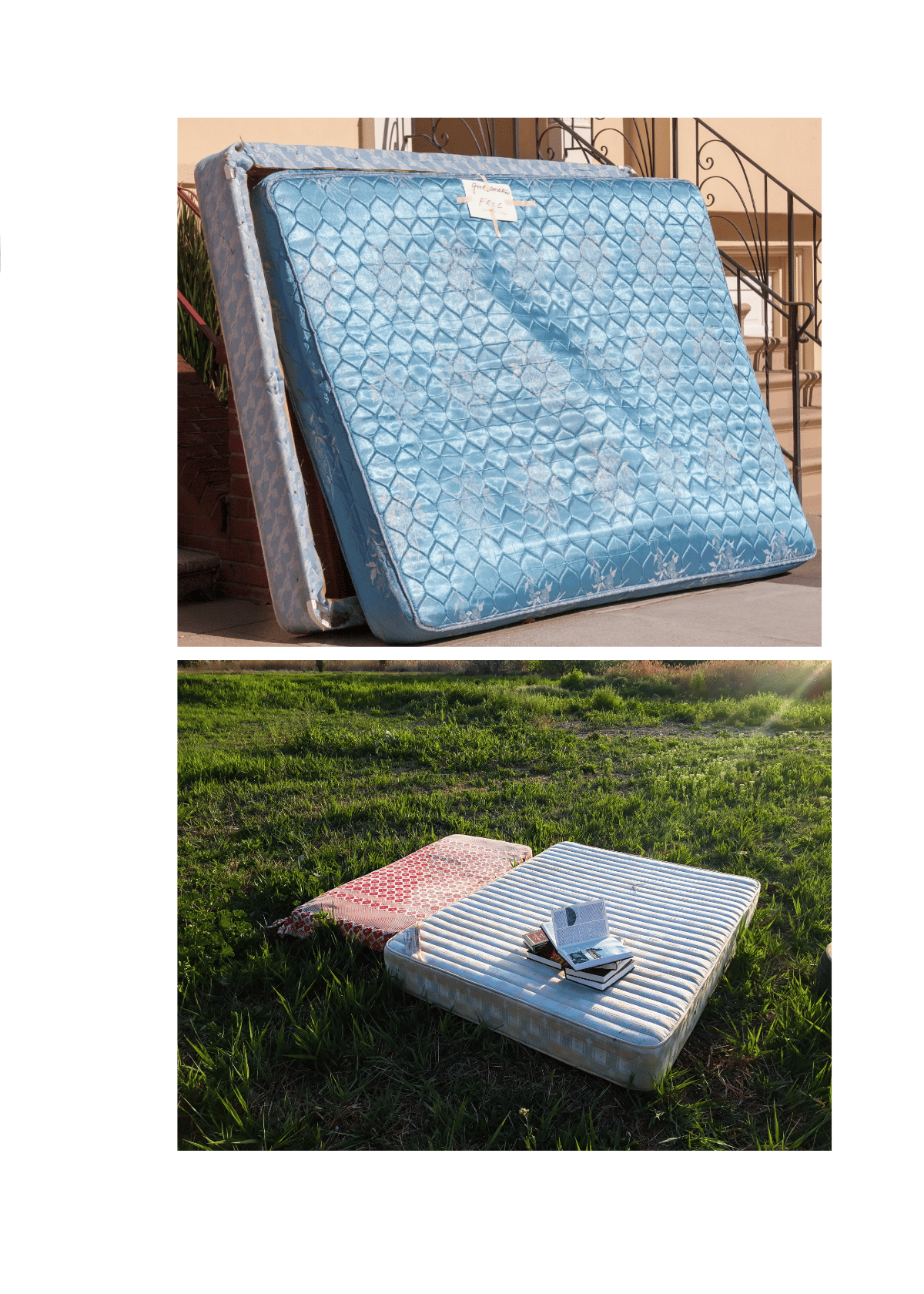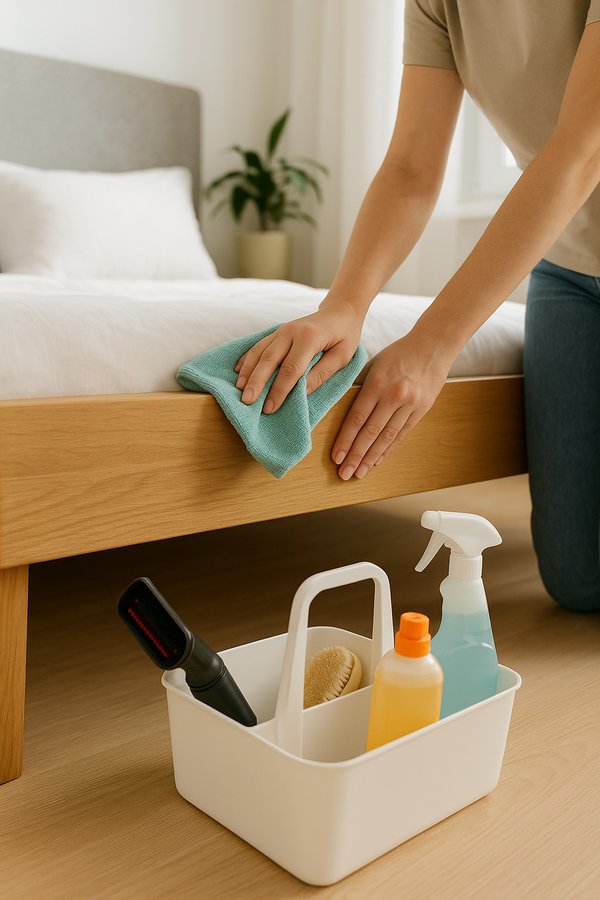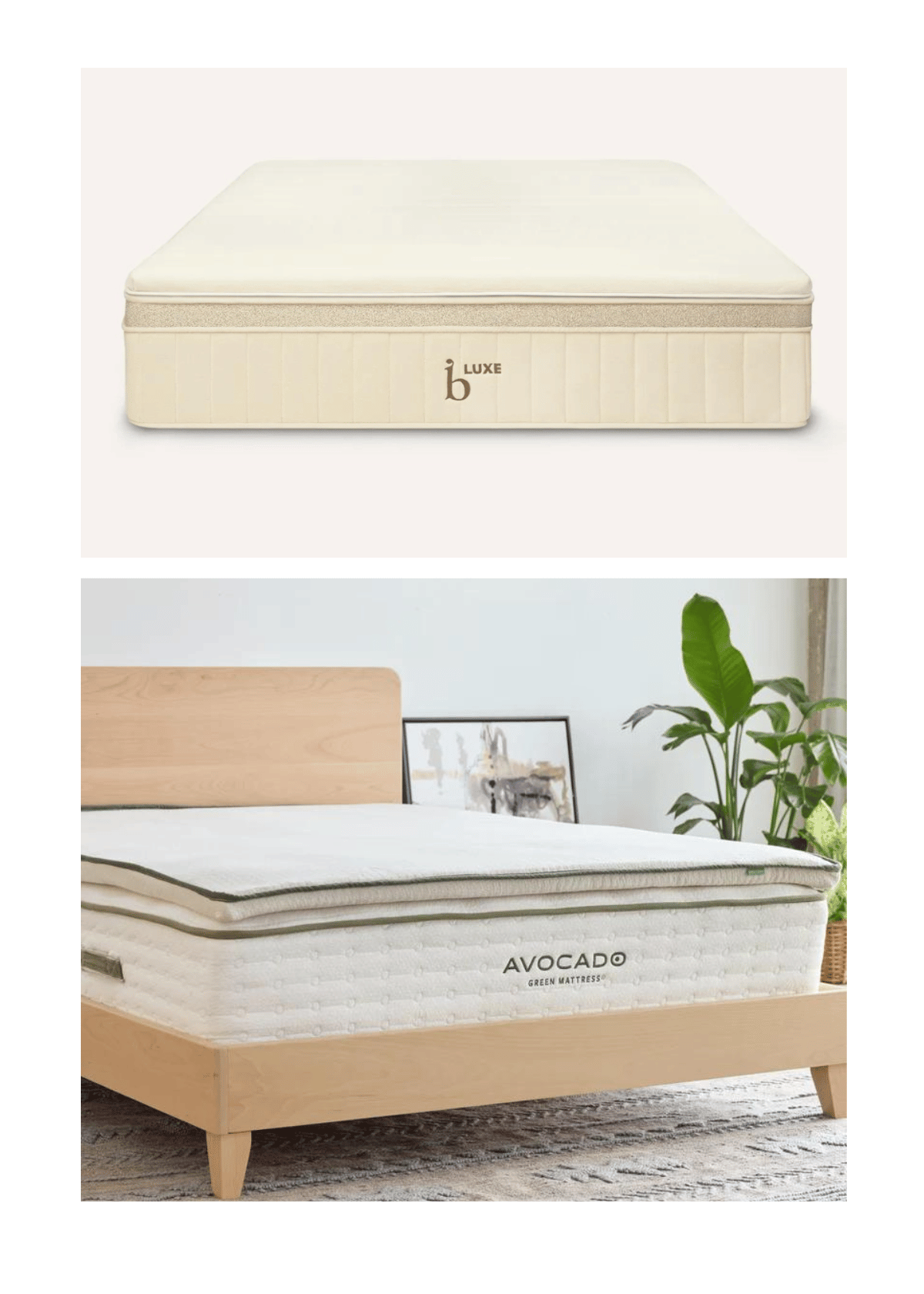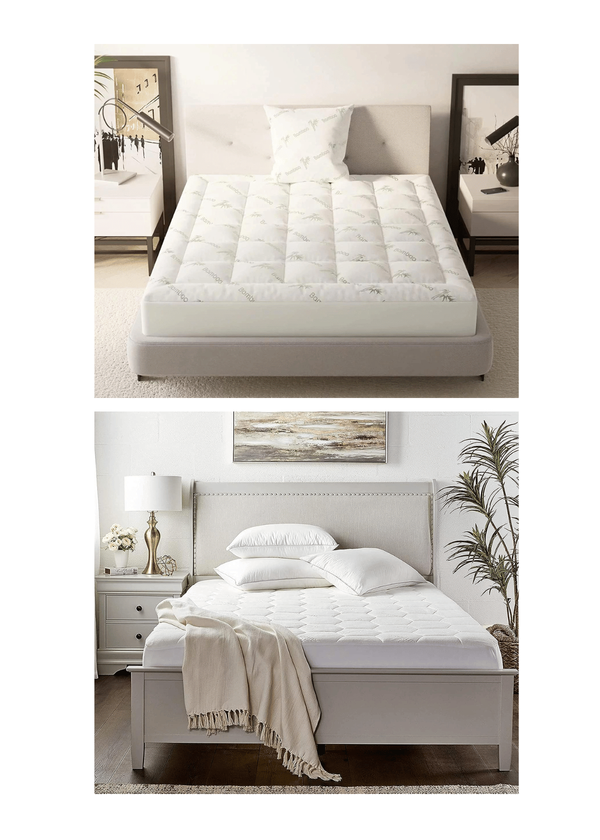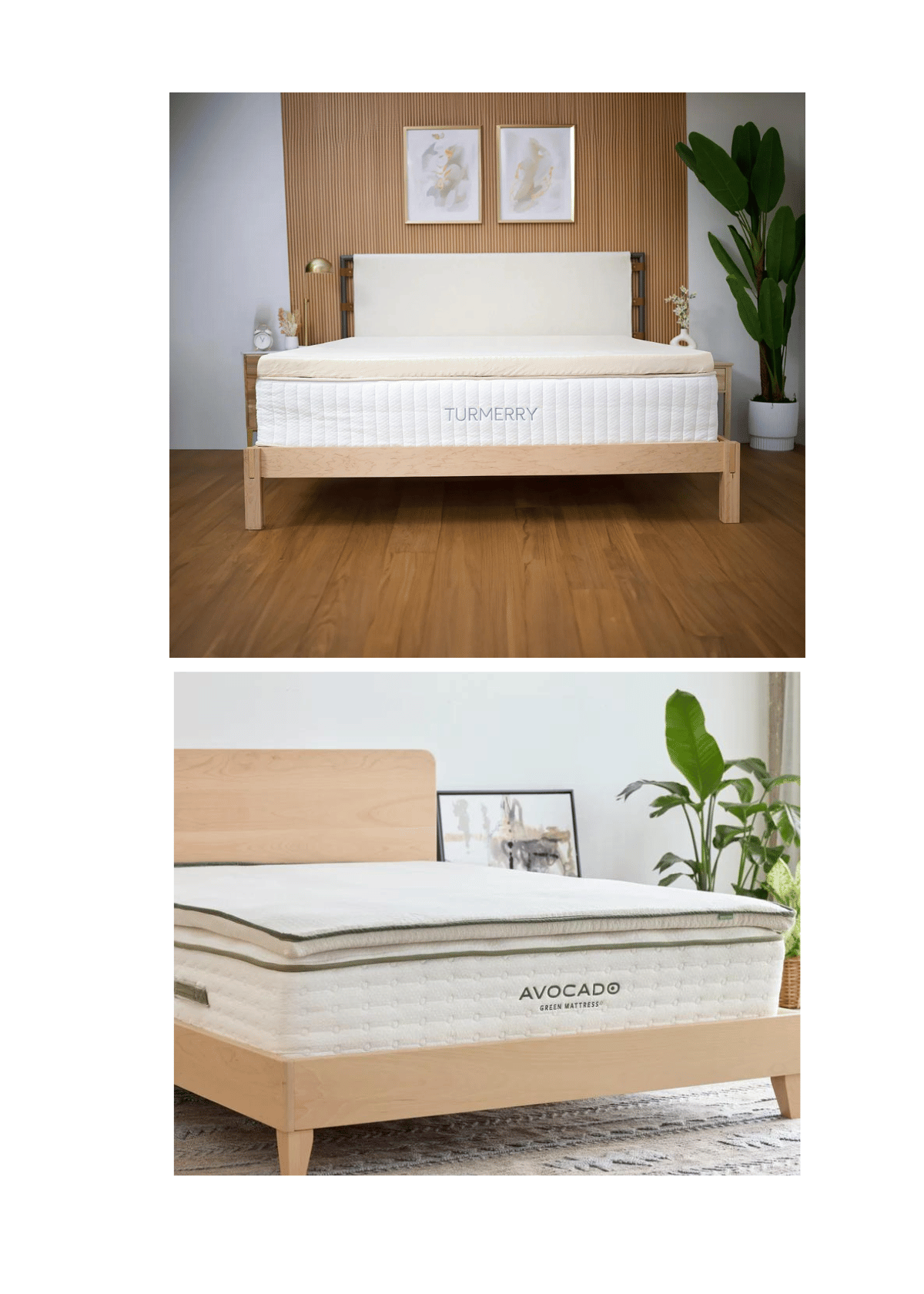(Last Update: 04/26/2025)
Did you know that most mattresses end up in landfills, taking up to 120 years to decompose?
This alarming fact has led to a growing concern about mattress waste and its impact on our planet. Fortunately, there are greener alternatives for mattress removal that help the environment and bring economic benefits to communities.
In this blog post, we will explore the best sustainable practices of mattress disposals for a greener planet, discuss the importance of adopting sustainable methods, and inspire you to make informed choices when buying a new mattress.
By the end of this blog post, you will better understand the environmental and economic impact of waste from mattresses and how you can be part of the solution. So, let's dive into mattress waste recycling and disposal and unveil the secrets to a greener planet!
The Growing Concern of Waste of Mattress
The Dangers of Illegally Dumped Mattresses
Illegal mattress dumping poses significant environmental hazards. When mattresses and box spring components are left on the side of the road, they contribute to urban blight and can be a breeding ground for pests.
The materials in these mattresses, such as foam padding and steel springs, do not decompose quickly.
- Contaminated soil and water
- Increased pest infestations
- Costs for public clean-up
- Health hazards for the community
To combat this issue, cities are stepping up enforcement and offering more convenient mattress disposal services to prevent illegal dumping. It's important to note that illegal dumping is a punishable offense, and those caught can face fines and other legal consequences.
Waste from mattresses is a growing concern primarily due to junkyard overflow, environmental impact, and economic strain on communities.
With an estimated 20 million mattresses ending up in landfills each year in the United States alone, the pressure on our planet and its resources is immense.
- In a time when eco-friendly practices are becoming increasingly important, we must consider better ways to recycle and discard our old beds.
- The truth is that many mattresses are made from different materials that can significantly impact the environment.
- When old mattresses are not recycled or thrown away, they take up valuable landfill space, contribute to greenhouse gas emissions, and place an economic burden on communities due to the rising waste management costs.
Landfill Overflow and Environmental Change
When mattresses end up in landfills, they undergo anaerobic decomposition, producing methane gas, a 23 times more potent greenhouse gas than carbon dioxide. This contributes to the alarming increase in global warming.
In addition, most beds can decompose for up to 120 years. Imagine the impact on our environment if we discard our mattresses irresponsibly.
- Fortunately for mattress manufacturers, there are examples of positive change. For example, in 2016, Connecticut recycled approximately 130,000 mattresses.
- This reduced 4.2 million kg of carbon dioxide equivalent emissions, saving 48,7 million megajoules (MJ) of fuel energy and almost $1.5 million for municipalities.
- This demonstrates the environmental benefits of adopting sustainable disposal and recycling methods. The next section will discuss the economic strain on communities due to improper mattress disposal fees.
Why Recycling Matters for Old Mattresses
Recycling your mattress is one of the easiest ways to reduce landfill waste and save valuable materials. Steel springs, memory foam mattresses, and box spring components can be separated at recycling facilities. Recycling services help prevent heavy materials from decompose slowly in landfills.
Effective Mattress Removal Services
Utilizing professional mattress removal services is an efficient way to dispose of unwanted mattresses. These services handle all the heavy lifting.
They often partner with local recycling centers, ensuring that components like foam padding, latex mattresses, and steel springs are recycled.
When choosing a mattress removal service, consider eco-friendly disposal methods, partnerships with local recycling centers, reasonable pricing, and proper licensing and insurance.
When choosing a mattress removal service, look for:
- Eco-friendly disposal methods
- Partnerships with local recycling centers
- Reasonable pricing
- Proper licensing and insurance
This approach helps keep mattresses out of landfills.
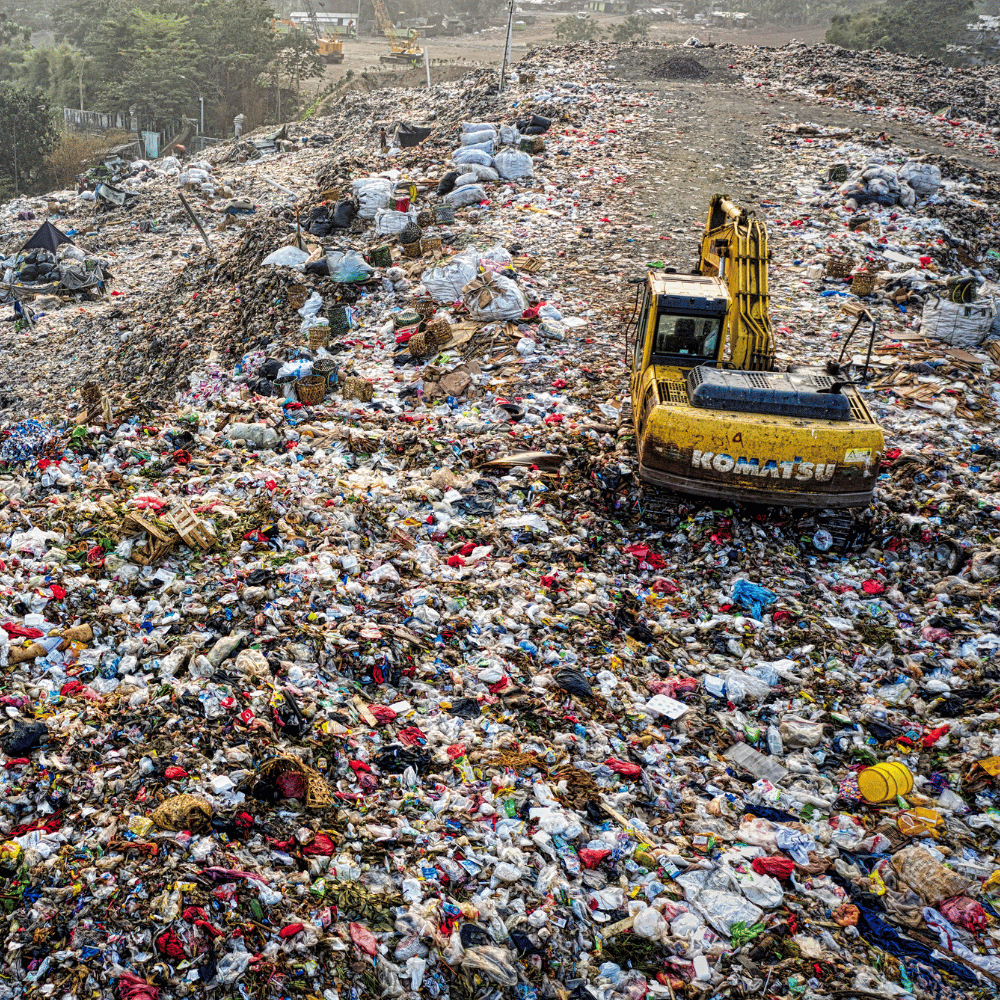
Economic Strain on Communities
The improper disposal of household items and mattresses harms the environment and financially burdens communities. As a result, landfills are becoming increasingly scarce, and debris management costs continue to rise.
States like Connecticut and Rhode Island have implemented mattress recycling Extended Producer Responsibility (EPR) policies in response to the restricted availability of landfill space and rising disposal costs of most mattresses.
- According to the California Bye Bye Mattress program managed by the Mattress Recycling Council, consumers in California can recycle their old mattresses for free at a participating collection site or recycling facility.
- By adopting sustainable mattress disposal methods such as donating, repurposing, and recycling mattresses with bed bugs, we can help reduce the economic strain on communities.
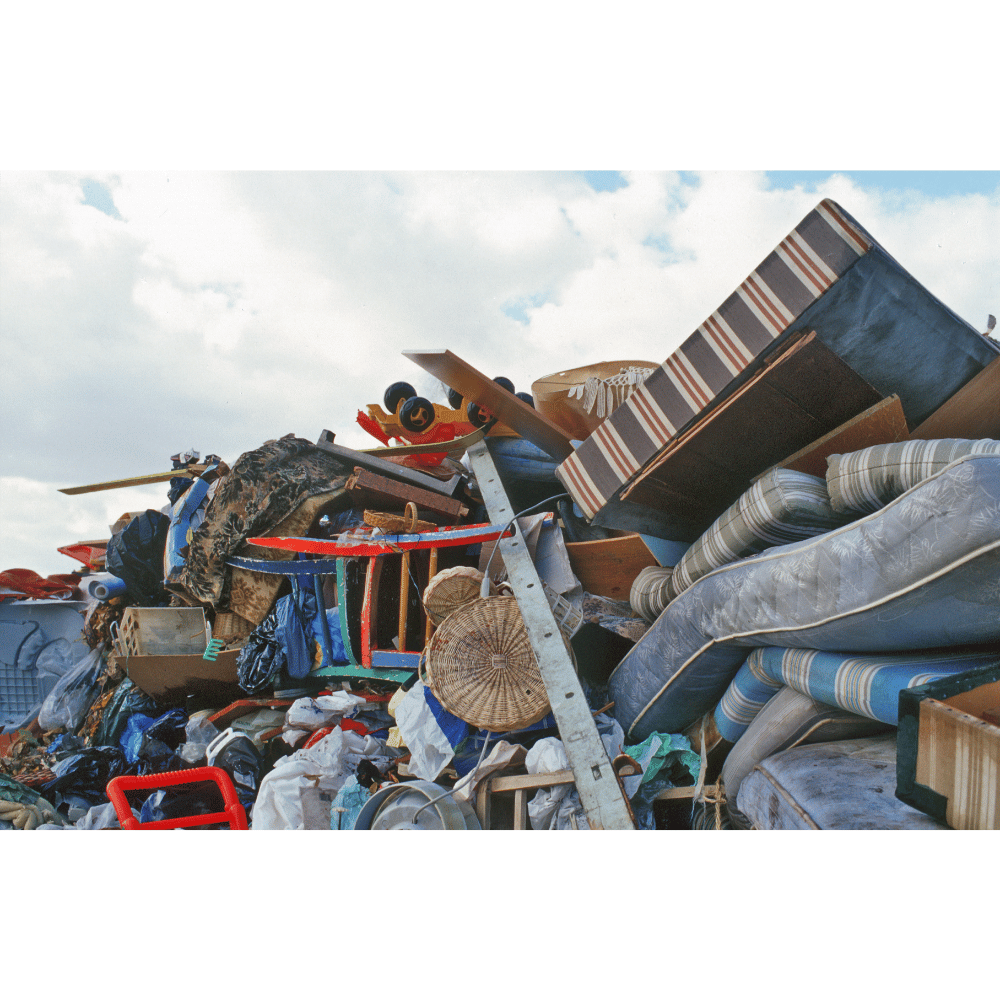
Adopting Sustainable Disposal Methods
Several sustainable disposal methods are available to recycle mattresses, including donating, reusing, repurposing, recycling facilities and programs, and supporting a circular economy.
- Over three-quarters of a mattress is recyclable.
- The mattress recycling program is the most cost-efficient solution for sustainable disposal.
- To ensure minimal environmental change, mattresses with bed bugs must be disposed of using the right disposal and recycled method, and environmental guidelines must be followed.
The Importance of Recycling Mattress and Box Springs
Recycling mattresses and box springs is crucial for minimizing environmental impact. Most mattresses contain components that can be repurposed.
For instance, steel springs can be melted down and reused, while foam padding can be turned into carpet underlayment or alternative fuel sources.
By taking your mattress to a local recycling center, you help:
- Conserve natural resources
- Reduce landfill waste
- Support sustainable manufacturing practices
This process keeps bulky items out of landfills and helps create new products from recovered materials. Our circular economy uses and reuses resources in a closed loop.
Donating and Repurposing
Donating unwanted items like old mattresses and hospital beds helps local residents and universities in need.
Mattress retailers and nonprofit organizations often offer pickup services or drop-off locations for donation.
This responsible way of giving mattresses a second life reduces waste while supporting community initiatives at the same time.
- Local and national nonprofits, such as Goodwill, Habitat for Humanity, and the Salvation Army, accept mattress donations.
- Before donating a mattress, it is important to assess its good condition realistically. For example, the current mattress may not be comfortable after several years, making it unsuitable for donation.
- Repurposing mattresses can also be an exciting DIY project.
- For example, the foam and plastic scraps from an inflatable mattress can be used for liners or outdoor grill covers. You can also recycle your mattress by donating it to local homeless shelters or listing it on a Facebook marketplace or Craiglist.
The coils and springs inside a mattress are valuable resources that can be melted and crafted into aesthetically pleasing shapes with a modern flair.
In the next section, we will discuss recycling facilities and programs for mattresses.
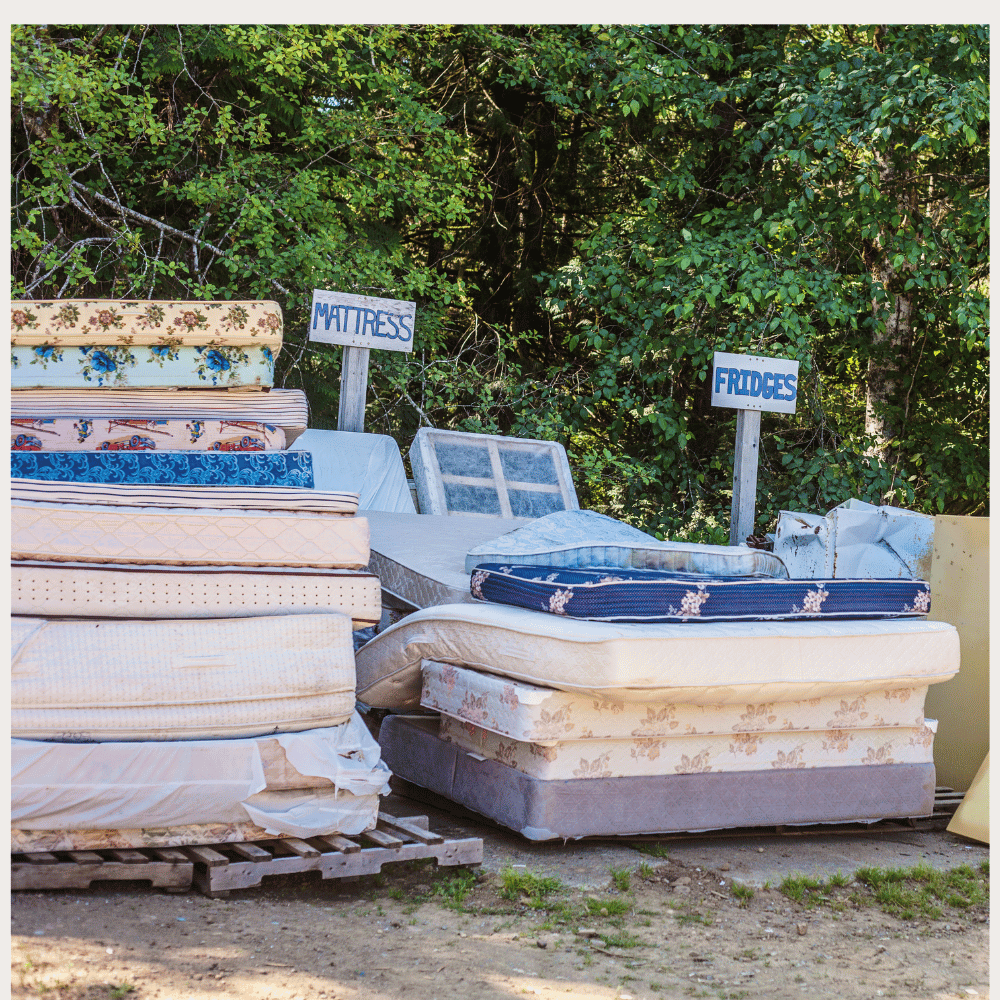
Old Mattress Recycling Facilities and Programs
Recycling facilities and programs are crucial in sustainable mattress disposal by encouraging initiatives to accept mattresses.
The concept of recycling mattresses has been introduced previously. Popular mattress types, such as foam, innerspring, pillowtop, and hybrid, can all be recycled.
Check local recycling services, city websites, and mattress recycling facilities for collection programs. Many locations offer curbside pickup options or container drop-off services for convenience.
Scheduling a pickup helps get rid of old mattresses without hassle.
- Inflatable mattresses and some box spring, and springs are also recyclable. Mattress recycling facilities can accept mattresses at specialized drop-off locations or nonspecialized mattress recycling centers.
- Consumers can also utilize Earth 911 to find recycling centers that accept mattresses, box springs, and springs.
- The mattress recycling process involves a machine cutting the bed down and peeling away the top layer of foam and fabric to expose the inner material, mostly steel and metal springs, which are then separated and stored.
- People can build a pet bed with an old mattress. Metal bed springs or box springs are either sold as scrap metal or melted down and reused for new, steel springs-based products, while wood framing is chipped and turned into mulch.
Alternatives to Landfilling Mattresses
Instead of sending your old mattress to a landfill, consider other, more environmentally friendly disposal options. Local charities often accept mattresses that are still in usable condition.
Some companies specialize in disassembling mattresses separating components like foam and fabric for various textile applications.
- Donating your mattress to local charities is not just a sustainable disposal option; it's a way to connect with and support your community.
- Explore mattress recycling programs.
- Use mattress disposal pros.
Choosing these alternatives reduces the burden on local landfills and contributes to a more sustainable environment. This is something to be proud of and can serve as an excellent motivation for others to follow your example.
If you're wondering where to dispose of old mattresses, explore local recycling centers, donation programs, and specialized removal services.
Supporting a Circular Economy Through Old Mattress Disposal
A circular economy is an innovative system that replaces the linear economy with a model of resource stewardship based on cradle-to-cradle principles.
By adopting sustainable old mattress disposal methods, we can support a circular economy, create jobs, and reduce debris. When buying a new mattress, selecting sustainable materials and looking for a retailer take-back program is crucial.
In the following sections, we will discuss the job creation and economic benefits of sustainable mattress disposal and ways to minimize debris and maximize resource stewardship.
The Role of Local Recycling Centers
Local recycling centers play a vital role in the responsible disposal of mattresses. These centers are equipped to handle materials that regular trash services cannot, such as industrial oil filters and mattress components. Many centers have specific recycling days for bulky items like mattresses and box springs.
Local recycling centers play a vital role by offering pick up and curbside pickup services for mattress and box spring disposal, efficiently handling box springs and promoting mattress recycling efforts.
Considerations when using a recycling center:
- Availability of mattress recycling programs
- Fees for disposal
- Accepted materials
- Operating hours and location.
In mattress disposal, accepted materials include steel springs and fabrics, while materials banned often involve hazardous chemicals and infested mattresses.

Disposable Mattress Business Model:
Job Creation, Mattress Recycling Council, and Economic Benefits
- Sustainable mattress disposal has several economic advantages.
- For example, if the statewide mattress recycling council in Texas increases the rate of mattress disposal by 40%, it could generate approximately 6,000 jobs.
- The full-time job of an average adult usually requires recycling around 6,000 mattresses every year.
- There are quite several mattresses to process annually. DR3, the most significant mattress recycling operation in the United States, is an excellent example of how sustainable mattress recycling disposal can create employment opportunities.
By adopting sustainable old mattress disposal methods, we can contribute to the growth of the circular economy, create jobs, and bolster the economy.
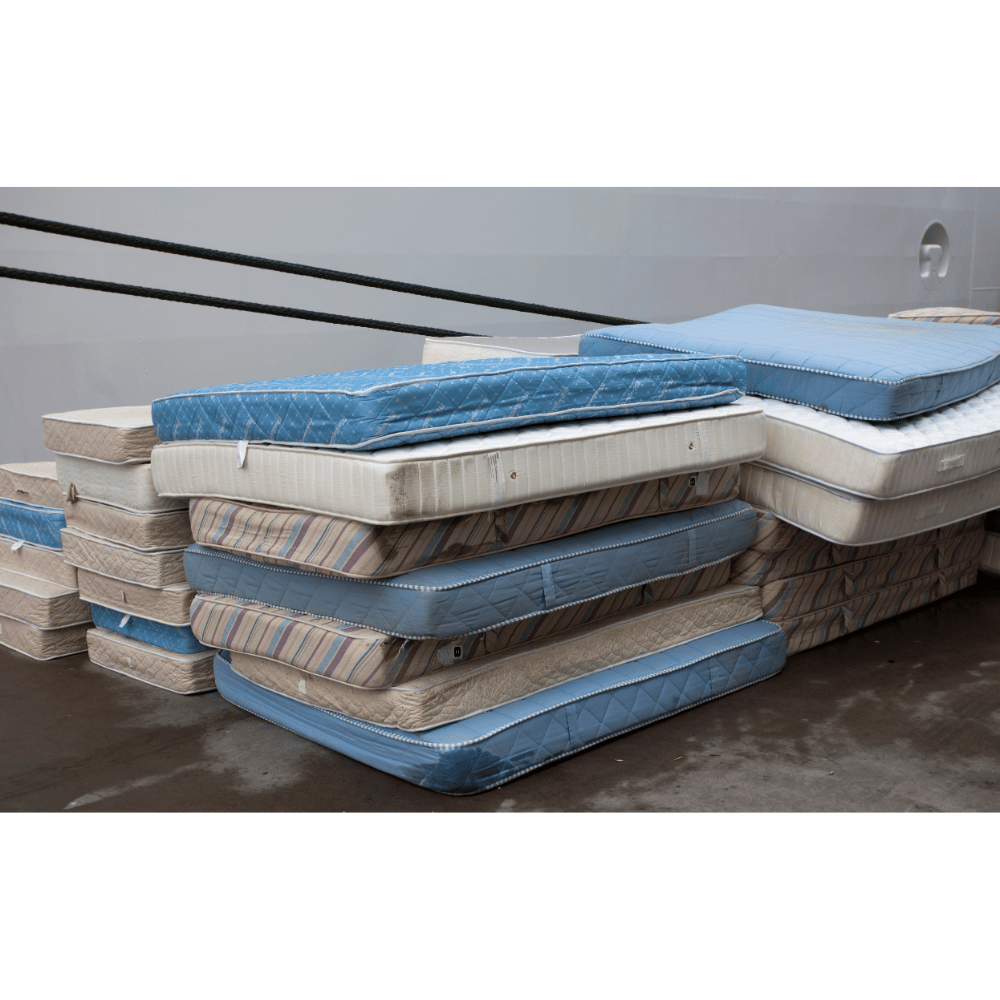
Minimizing Waste and Maximizing Resource Stewardship
A circular economy aims to be restorative and regenerative by design, based on designing out debris and pollution.
Mattress recycling in a circular economy can result in numerous environmentally-friendly benefits, such as decreased landfill location, conservation of natural resources, and decreased greenhouse gas emissions.
Recycling mattresses can decrease waste sent to landfills.
By supporting a circular economy by disposing of mattresses, we can minimize debris, maximize resource stewardship, and create a cleaner, greener future for future generations.
How to Prepare Your Mattress for Recycling
It's essential to prepare your mattress properly before recycling it. You can start by removing all bedding and checking for damage.
If your mattress is in a usable condition, consider donating it instead. If it's beyond repair, ensure it's clean and contaminant-free before taking it to a recycling center.
Steps for preparation:
- Strip the mattress of bedding
- Clean the mattress surface
- Check for damage
- Separate components if necessary
Proper preparation ensures that your mattress can be recycled efficiently, reducing the burden on recycling facilities.
Repurposing Mattress Components for New Products
Mattress components like foam padding and steel springs can be repurposed into new products. Foam can be used in carpet underlayment or as insulation, while steel springs are valuable for recycling into new metal products. Some companies specialize in breaking down mattresses for these purposes.
- Foam padding for carpet underlayment
- Steel springs for metal recycling
- Textile applications for mattress fabric
This process not only diverts waste from landfills but also supports creation of sustainable, eco-friendly products.
The Benefits of Donating Your Mattress
Donating a mattress still in good condition is a great way to give back to the community. Many local charities and shelters accept mattress donations and, before donating, provide them to those in need.
Benefits of donation:
- Helps those in need
- Reduces waste
- Provides a tax deduction
- Supports local charities
Donating your mattress extends its life and keeps it out of the landfill.
The Process of Disassembling a Mattress
If you would like to handle mattress disposal yourself, please feel free to disassemble the mattress. This process involves separating the mattress into its core components, such as foam, fabric, and springs. These materials can then be taken to specialized recycling facilities or used in other textile applications.
Steps to disassemble a mattress:
- Cut open the mattress cover
- Remove foam padding
- Separate springs from fabric
- Sort materials for recycling
Disassembling a mattress reduces the space it occupies and makes it easier to recycle each component.
Making Informed Choices When Buying a New Mattress
As we have seen throughout this blog post, how we dispose of our old mattresses significantly impacts our environment and communities.
- When it's time to dispose of our old mattress and buy one, it is essential to make informed choices to ensure we contribute to a more sustainable future.
- When purchasing a mattress, factors such as comfort, support, durability, and additional cost should be considered.
Selecting Sustainable Materials
It is crucial to select organic mattresses made from sustainable materials such as organic cotton, natural latex, wool, hemp, and kapok.
The material is better for the environment and ensures a good quality mattress and a healthier sleeping environment for you and your family.
Look for certifications such as GOTS and OEKO-TEX to ensure the materials are sustainably sourced.
Selecting a mattress made from sustainable materials can contribute to a greener planet and support the principles of a circular economy.
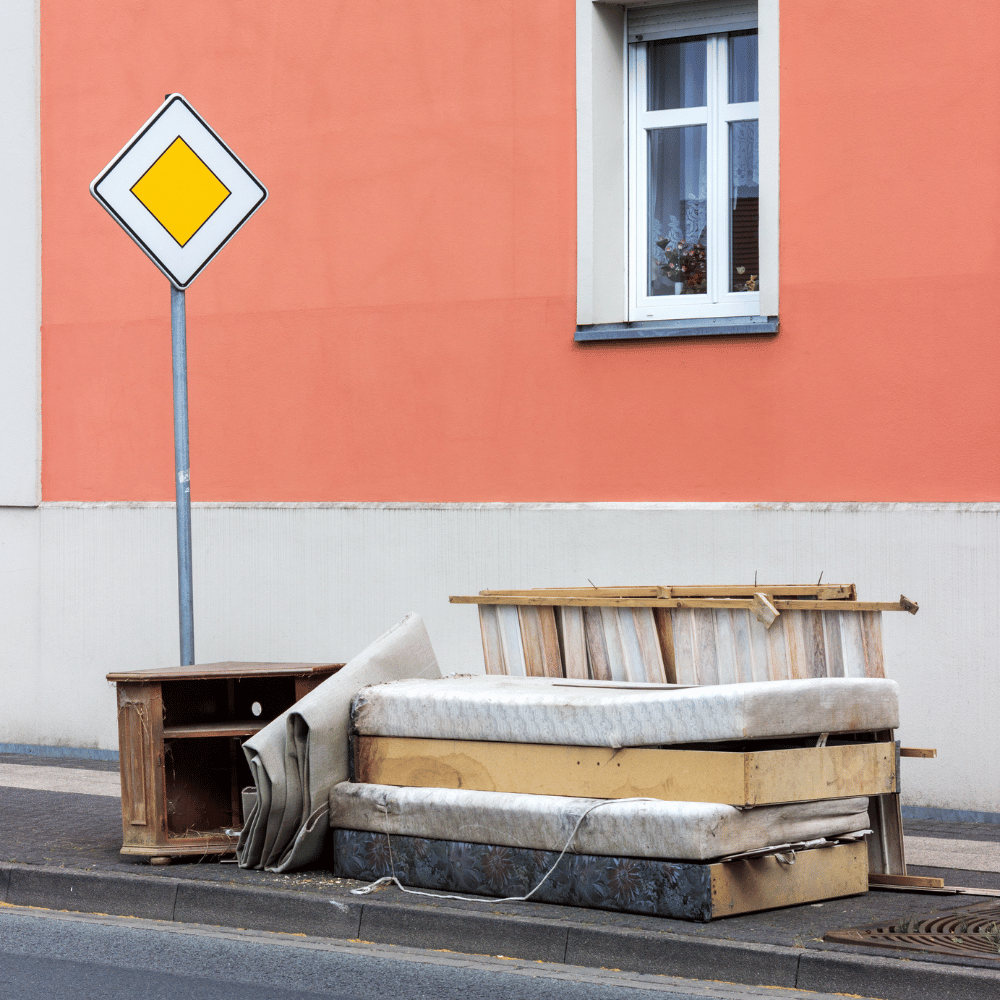
Retailer Take-Back Programs
Retailer take-back programs are initiatives offered by major retailers or stores specializing in selling mattresses, wherein they provide free hauling and recycling of your old mattress when you purchase a new one.
These programs ensure that your old mattress is disposed of responsibly.
When buying a mattress, consider choosing a retailer that offers a take-back mattress recycling program, too. Doing so supports a circular economy and contributes to a cleaner, greener future for future generations.
Advocating for Change and Supporting Green Initiatives
As we have seen throughout this blog post, how we dispose of our mattresses significantly impacts our environment and communities.
Advocating for change and supporting green initiatives is crucial, such as lobbying for extended producer responsibility (EPR) legislation and supporting nonprofit organizations and local mattress recycling centers and facilities.
In the following sections, we will discuss how to lobby for EPR legislation and the benefits of supporting nonprofits and local and mattress recycling programs and facilities.
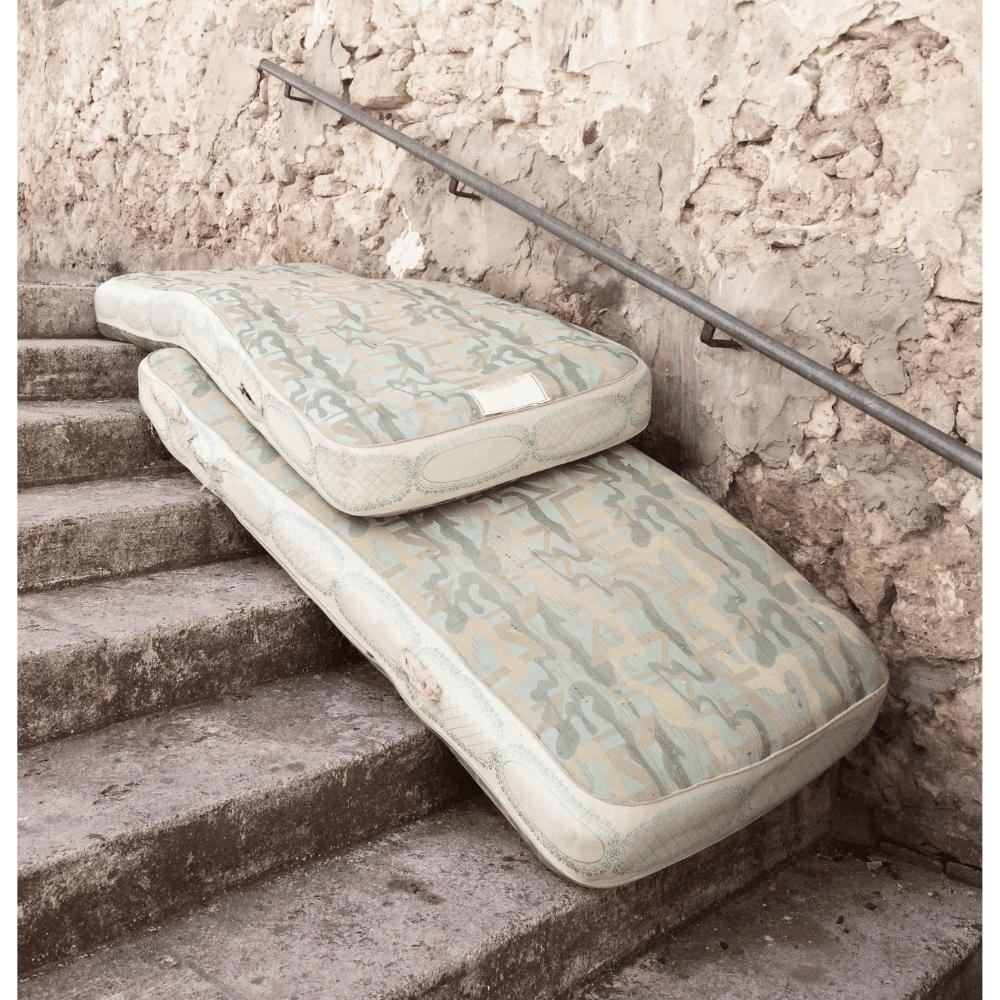
Lobbying for Extended Producer Responsibility (EPR) Legislation
Extended Producer Responsibility (EPR) legislation is a policy approach that holds producers accountable for the end-of-life management of their products. Lobbying for EPR legislation is essential to create a more sustainable future for our planet.
To become proficient in EPR legislation, please be sure to familiarize yourself with the applicable laws and regulations and engage with stakeholders who can provide support.
By lobbying for EPR legislation, we can help promote a circular economy and create a more sustainable future for future generations.
Supporting Nonprofits and Local Mattress Recycling Facilities
Nonprofit organizations and local mattress recycling facilities are vital in promoting sustainable disposal of mattresses and supporting a circular economy.
You can contribute to these organizations in several ways, such as volunteering at a local recycling facility.
By supporting nonprofits and local recycling facilities for unwanted mattress options, you can help create a more sustainable future for future generations. We can make a difference and contribute to a cleaner, greener planet.
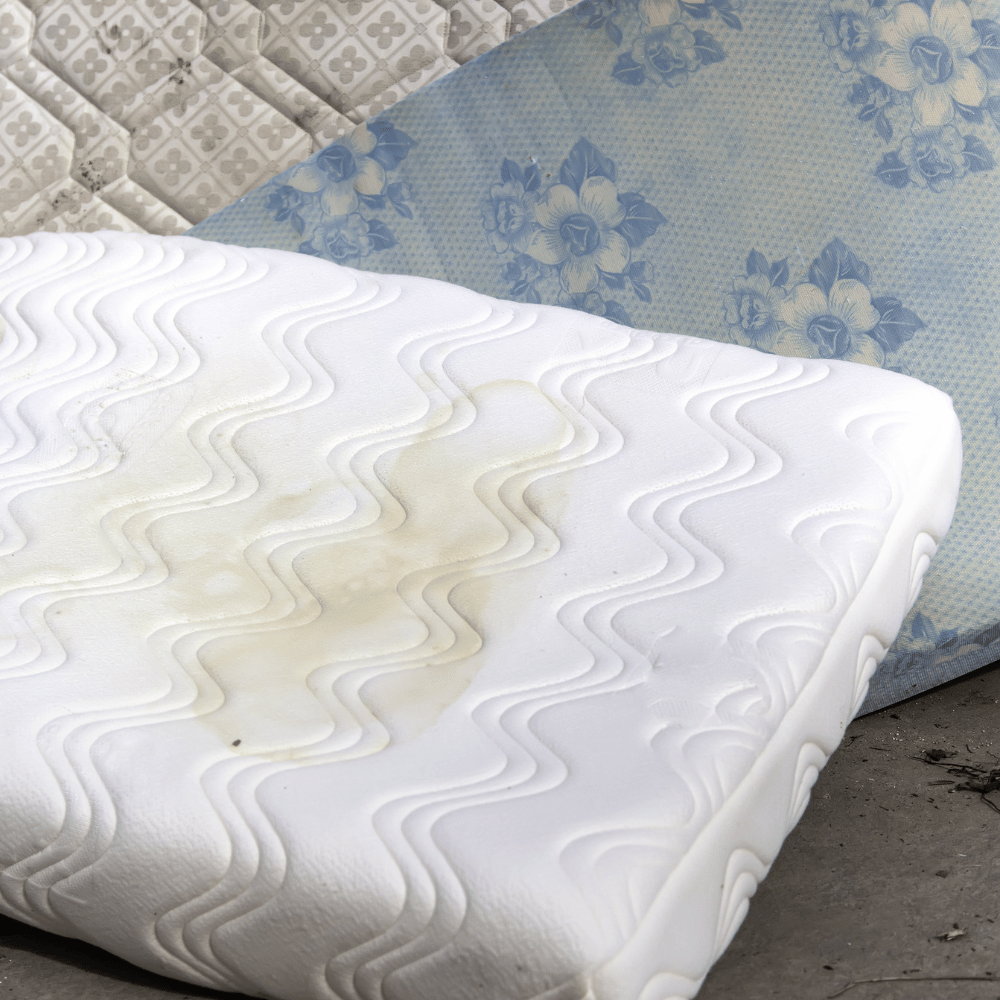
Why Mattress Recycling is the Future
With the growing awareness of environmental sustainability, mattress recycling is essential to waste management. By recycling, you ensure that the valuable materials in your mattress are recovered and reused
Future trends in mattress recycling:
- Increased availability of recycling services
- Development of new recycling technologies
- Greater public awareness and participation
As more people turn to recycling, the demand for eco-friendly disposal options will continue to rise, eventually becoming standard practice.
Preparing Your Mattress for Eco-Friendly Disposal
Before disposal, remove accessories like mattress covers and clean the surface of unwanted debris. Some recycling services require compact mattresses or separation of box springs for easy transport. Additionally, save time by booking an appointment or using professional teams specialized in heavy lifting, ensuring fast and simple removal.
Common Challenges and How to Overcome Them
Managing mattress disposal can involve dealing with pricing, collection requirements, or infested products. Always review service details carefully to comply with local regulations. Contact recycling centers or mattress retailers if unsure about curbside options. Choosing professional removal minimizes stress while ensuring responsible mattress and box spring recycling at scale.
SUMMARY
Throughout this blog post, we have explored the growing concern about waste from a mattress and its impact on our environment and communities.
We can reduce landfill overflow, create jobs, and support a circular economy by adopting sustainable disposal methods such as donating, repurposing, and mattress recycling.
We have also discussed the importance of making informed choices when buying a new mattress, selecting sustainable materials, and supporting retailer take-back programs.
By advocating for change and supporting green initiatives, such as lobbying for EPR legislation and supporting nonprofits and local recycling facilities, we can contribute to a more sustainable future for future generations.
Frequently Asked Questions
What institution manages the Bye Bye Mattress?
The Bye Bye Mattress program is managed by the Mattress Recycling Council (MRC), a nonprofit organization created by the mattress industry to develop and implement statewide mattress recycling programs.
This organization was formed following the passage of laws in California, Connecticut, and Rhode Island. Although the MRC coordinates with state entities like the California Department of Resources Recycling and Recovery (CalRecycle), the MRC directly manages the program.
What is the most eco-friendly method of disposal of waste?
Composting is the most eco-friendly waste disposal method since it produces a nutrient-rich product that can be used as fertilizer for gardens and fields,.
Composting is a great way to reduce the amount of debris that goes to landfills. It can also create a nutrient-rich soil amendment that can be used in gardens and fields.
What makes a mattress eco-friendly?
An eco-friendly mattress is free from toxic chemicals because it is made from renewable or recycled materials, has low or reduced emissions in production, and has a very low content of VOCs. These features help reduce sleep and environmental impact.
How do you dispose of a badly soiled mattress?
Hiring a professional waste removal service is recommended to dispose of your mattress properly or a badly soiled old mattress part. A Waste Disposal Service provides specialized services for mattress hauling, which will ensure in good condition that the used mattress or old mattress part is safely and appropriately disposed of.
How long does it take for a mattress to decompose?
It takes up to 120 years for a mattress to decompose—significantly longer than the average lifespan of a bed and its owner. To avoid contributing to landfills, research disposal and recycling options for pet beds before disposing of your mattress yourself.

